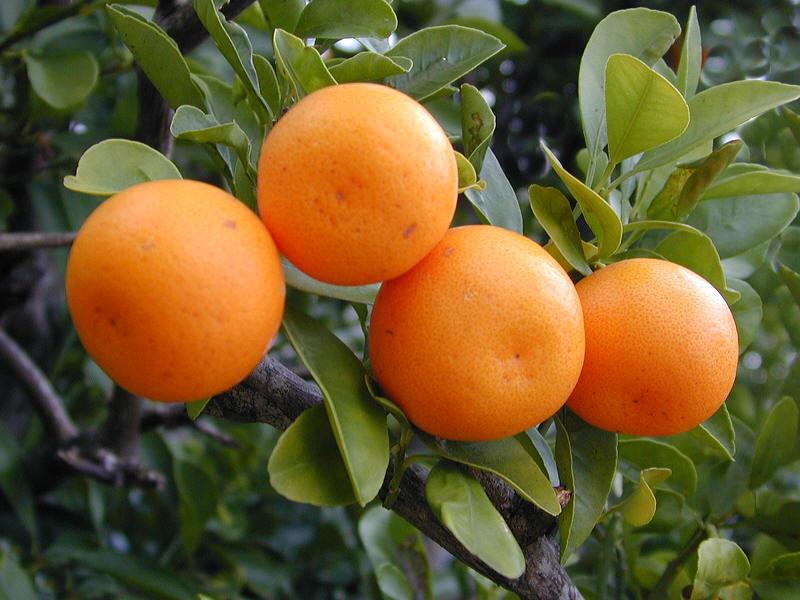
The discovery of citrus greening disease on an orange tree in a commercial grove in the Texas Rio Grande Valley last week is unsettling to growers.Comprehensive management plan, extensive surveys and preventive control measures over the last three years gives local growers reason for hope.The Texas Department of Agriculture announced a five-day emergency quarantine surrounding the infected tree.

The discovery of citrus greening disease on an orange tree in a commercial grove in the Texas Rio Grande Valley last week may be unsettling to growers, but a comprehensive management plan, extensive surveys and preventive control measures over the last three years gives local growers reason for hope. Citrus growers say they have invested substantial time and money preparing for what many are calling the inevitable arrival of the dreaded disease.
“We have known for a long time that there was a good chance the disease would arrive on our doorstep. For one, the highest concentrations of citrus greening disease in North America can be found across the border in Mexico,” reports Dr. Robert Mangan, acting director of the USDA Kika de la Garza Subtropical Research Center in Weslaco. “The disease is difficult to detect and it often takes years before the disease is confirmed on a plant.”
Mangan says the research center, now scheduled for closing in June as part of a USDA plan to trim $150 million from its budget, previously proposed placing Asian citrus psyllid traps on Mexican trucks headed across the border in an attempt to test for the moth that spreads the disease. But that plan was met by federal and industry opposition because the traps had not been tested on truck shipments.
The Asian citrus psyllid, which is responsible for spreading the disease, has long been detected in Texas, but confirmation of citrus greening disease in the Valley this month represents the first confirmed report of the actual disease in the state. Citrus greening, first identified in 2005, has destroyed hundreds of thousands of acres of citrus in Florida. It also has been found in Georgia, South Carolina and Louisiana.
“The outbreak of citrus greening in Florida and the resulting damage to the citrus industry there served as a wake up call to other citrus producing areas including Texas, California and Arizona,” Mangan adds.
The Texas Department of Agriculture announced a five-day emergency quarantine surrounding the infected tree this week until further investigation can determine if other trees or groves in the Valley exhibit signs of infection. An expanded quarantine is expected later this week following results of a field survey currently underway. Under terms of the quarantine, citrus nursery stock may not be shipped outside the area. Fruit may be shipped out, but it must be free of leaf material and debris.
“Citrus greening disease doesn’t show up overnight. In fact, the disease may have been present on the tree in question for some time, so additional inspections are required to determine if this is an isolated case or if there are other instances across the area,” Mangan said.
No surprise
Ray Prewett, President of Citrus Mutual in Mission, says most researchers and growers are not surprised the disease has spread to the Texas Valley. Valley citrus growers have been involved in a comprehensive management program in recent years to control Asian psyllid populations in an effort to curtail the chances of infection, and Prewett says he is hopeful the disease is not widespread.
“Psyllid populations in the Valley are currently at the lowest levels they have been for sometime thanks to grower participation in a comprehensive management and control program, and they should be commended for their active role in a program that added to their production costs though the disease had not been detected until now,” Prewett says. “Federal support has been available for infrastructure but the growers have been bearing the cost for psyllid control and treatment.”
Nearly 85 percent of commercial groves have participated in the psyllid control program, an effort involving dormant spray applications, especially during cooler weather months. But a number of factors including recent rains, mild temperatures, high winds, irrigation and a continuing harvest have made the first dormant spray window smaller and the task difficult to achieve.
“Numerous folks are reporting that our citrus acreage may not have achieved true dormancy this winter, and there are ongoing reports of flush development and psyllid activity now,” Citrus Mutual’s Bret Erickson explained to Valley growers in an email on Jan. 5. “Thanks to your efforts, the past year’s overall psyllid populations have been at their lowest recorded levels.”
Erickson had warned growers not to rely only on visual checks or traps for psyllid populations and suggested scouts tap sample trees in their grove. Research has shown that during the winter months psyllids are more likely to move inside the canopy and not be as mobile. It appears it was one of these samples that uncovered the disease in a grove near San Juan, located near the Texas-Mexico border.
Prewett and Mangan agree that Valley growers have learned a great deal about citrus greening by monitoring its devastating effect on Florida citrus in recent years and as a result of extensive research conducted by USDA’s Weslaco research center and by Texas AgriLife scientists. Both say they remain hopeful the disease can be contained and controlled.
“One of things USDA and the Texas Department of Agriculture are looking at is the ability of regulatory agencies to lawfully remove the infected trees. But Valley growers are well aware this is the best way to curtail spread of the disease and they are expected to voluntarily participate in whatever measures are required to prevent widespread infection,” Mangan said.
About the Author(s)
You May Also Like





